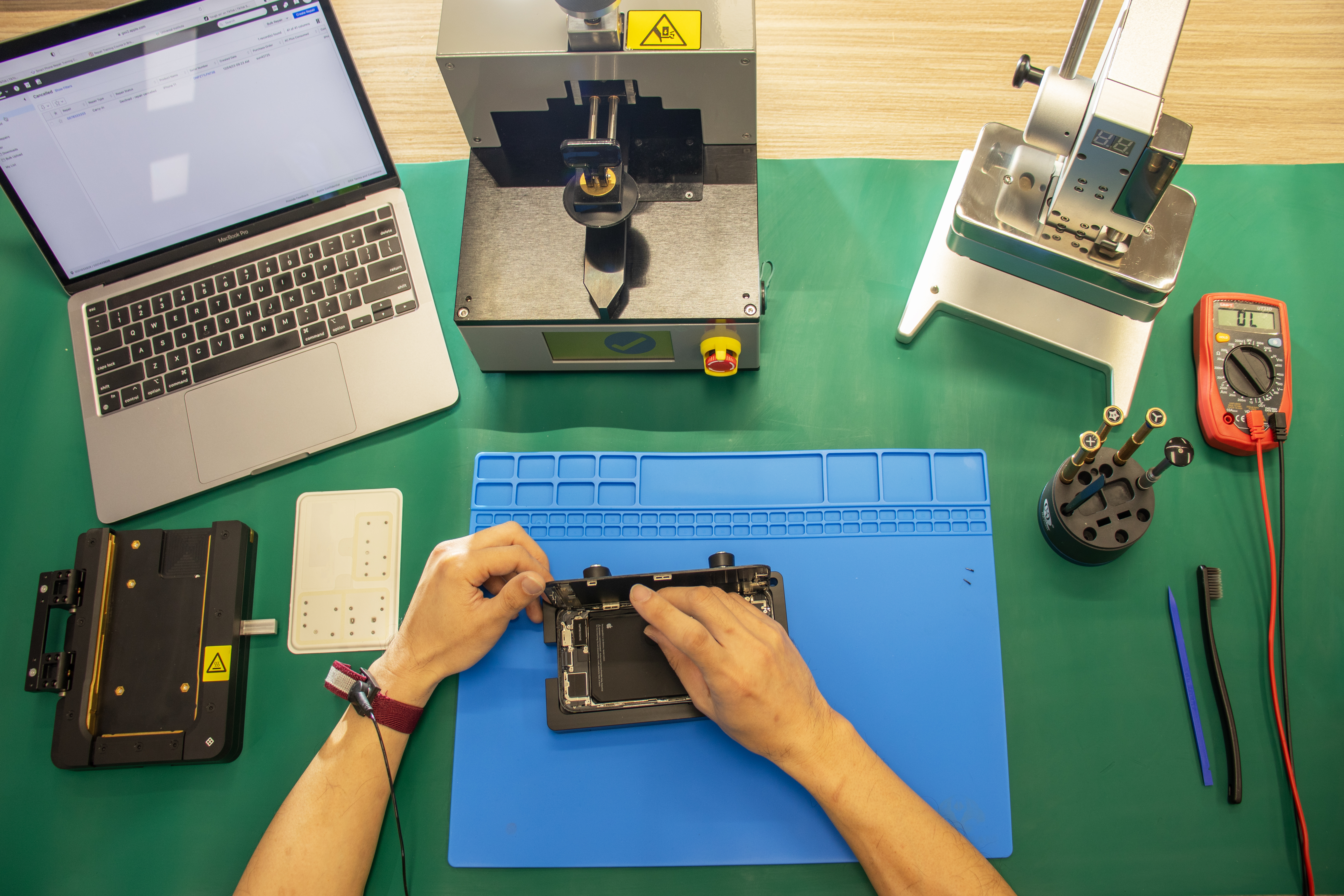In today’s fast-paced world, smartphones are essential tools that we rely on daily. When they break or malfunction, getting them repaired quickly and cost-effectively is a priority for most users. However, the temptation to use non-genuine parts for these repairs can be strong, primarily due to lower costs. While it might seem like a good idea at the moment, using non-genuine parts can have significant negative impacts. In this blog post, we’ll explore why opting for genuine parts is crucial and the potential risks of using non-genuine alternatives.
Understanding Genuine vs. Non-Genuine Parts
Genuine Parts:
Genuine parts, also known as OEM (Original Equipment Manufacturer) parts, are produced by the original manufacturer of the smartphone. These parts are designed to meet the exact specifications and standards of the original components.
Non-Genuine Parts:
Non-genuine parts, often referred to as aftermarket or third-party parts, are manufactured by companies other than the original manufacturer. These parts can vary widely in quality and compatibility.
The Benefits of Using Genuine Parts
Reliability and Performance
- Consistent Quality: Genuine parts ensure that your phone will function as expected, maintaining its performance and reliability.
- Longevity: OEM parts are designed to last, reducing the need for frequent repairs.
Safety
- Certified Standards: Genuine parts meet the manufacturer’s safety standards, minimizing risks such as overheating or electric shocks.
Warranty Protection
- Maintain Warranty: Repairs with genuine parts are often covered under the manufacturer’s warranty, ensuring continued support and protection.
Resale Value
- Higher Value: Phones repaired with genuine parts tend to retain their value better, making them more attractive to potential buyers.

The Risks of Using Non-Genuine Parts
Quality and Durability
Problem: Non-genuine parts are often made with cheaper materials and less precise manufacturing processes. This can result in parts that are not as durable or reliable as their genuine counterparts.
Impact:
- Shorter Lifespan: Non-genuine parts are more likely to wear out or fail prematurely, leading to more frequent repairs.
- Inconsistent Performance: These parts may not function as well as genuine parts, leading to issues such as poor touch sensitivity in screens or reduced battery life.
Compatibility Issues
Problem: Aftermarket parts may not be designed to the exact specifications of the original device, leading to compatibility problems.
Impact:
- Functional Problems: Non-genuine parts might not fit perfectly, causing issues with the phone’s performance. For example, a non-genuine screen might not display colors correctly or respond accurately to touch.
- Software Issues: Some non-genuine parts can cause software conflicts or malfunctions, as the phone’s operating system may not recognize them properly.
Safety Concerns
Problem: Using low-quality parts can pose safety risks, particularly with components like batteries.
Impact:
- Overheating and Fire Hazards: Non-genuine batteries may not have the same safety features as OEM batteries, increasing the risk of overheating, swelling, or even catching fire.
- Electric Shock: Poorly made charging components can cause electric shocks or damage the phone’s internal circuitry.
Void Warranty and Support
Problem: Most smartphone manufacturers have strict policies regarding repairs and replacements. Using non-genuine parts can void your warranty.
Impact:
- Warranty Void: If your phone is under warranty, using non-genuine parts will likely void it, leaving you without manufacturer support for future issues.
- No Support: Many manufacturers and authorised service centres will refuse to service phones that have been repaired with non-genuine parts.
Resale Value
Problem: A phone repaired with non-genuine parts may have a lower resale value compared to one repaired with genuine parts.
Impact:
- Reduced Market Value: When selling your phone, potential buyers may be wary of non-genuine parts, leading to a lower resale price.
- Trust Issues: Buyers prefer devices that have been maintained with genuine parts as it assures them of the phone’s reliability and quality.

Real-World Examples: Apple and Samsung
Take iPhone and Samsung as examples. Companies like PTC offer a variety of repair options to cater to different customer needs. For iPhones, PTC provides Apple screen replacements, OEM quality parts, and aftermarket parts, ensuring that there is a solution for every budget and requirement. For Samsung devices, PTC offers Samsung service packs, which include genuine parts that guarantee high-quality performance. These diverse options allow customers to make informed choices based on their preferences and ensure that their devices are repaired to the highest standards.
Conclusion
While the allure of cheaper, non-genuine parts can be tempting, the risks and potential costs associated with them far outweigh the initial savings. Using genuine parts for phone repairs ensures reliability, safety, and longevity, protecting your investment in the long run. Always choose a reputable repair service that uses OEM parts to maintain your phone’s performance and value. Your smartphone is a crucial part of your daily life, and it deserves the best care possible.







